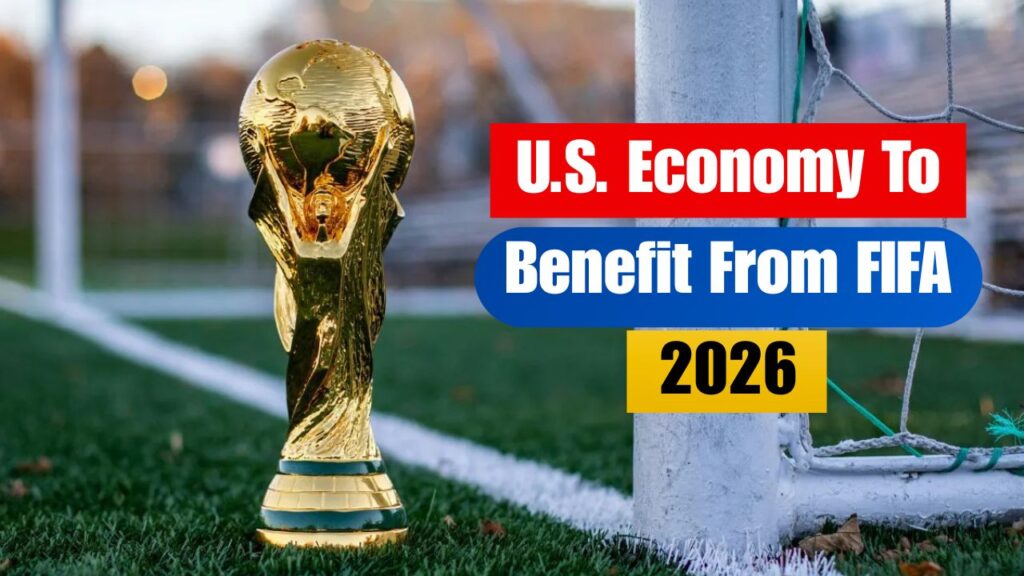The excitement surrounding the FIFA World Cup 2026 is already generating buzz across the United States — and for good reason. Hosting this global event is expected to bring a significant boost to the U.S. economy, particularly through job creation and a surge in tourism spending. With matches set to take place in cities like Los Angeles, New York, Miami, and Dallas, local businesses and workers will likely see huge opportunities. From stadium construction and transport upgrades to hotel bookings and fan experiences, the economic impact will be wide-reaching. As the tournament draws near, state and federal officials are planning strategic investments to ensure every region involved benefits from the global spotlight.

Massive Job Creation Expected Across Multiple Sectors
One of the biggest advantages of hosting the World Cup 2026 is the massive increase in employment across industries. Sectors like construction, hospitality, event management, security, and transportation will experience an influx of temporary and permanent jobs. Building and upgrading infrastructure, including stadiums and transit lines, will need thousands of workers. Meanwhile, restaurants, hotels, and tour companies will be hiring to meet the demands of international visitors. Experts estimate that over 250,000 jobs could be created directly or indirectly due to the tournament. Local governments are already coordinating with employment agencies and trade unions to launch training programs so workers can gain skills in time for this boom. This employment wave is seen as a short-term catalyst and a potential long-term transformation in several U.S. cities.
Tourism Surge Set to Inject Billions into Local Economies
The tourism boost from the World Cup will be nothing short of historic. With an expected attendance of over 5 million visitors from around the globe, major U.S. cities are preparing for a record influx of travelers. The demand for hotels, restaurants, guided tours, and transport services will skyrocket — especially in host cities. According to economic forecasts, the tourism revenue alone could contribute nearly $5 billion to the U.S. economy. Cities like Atlanta, Philadelphia, and San Francisco are enhancing their cultural events, entertainment districts, and airport infrastructure to give tourists a world-class experience. Beyond financial benefits, this surge also presents an opportunity for U.S. tourism to reposition itself globally and increase international travel even after the tournament ends.
 North America Gears Up for FIFA 2026 — How U.S., Mexico, and Canada Are Preparing for the Mega Event
North America Gears Up for FIFA 2026 — How U.S., Mexico, and Canada Are Preparing for the Mega Event
Small Businesses and Local Communities Will Benefit Too
While large corporations will gain from broadcasting rights and sponsorship deals, small businesses are also gearing up for the World Cup boom. Local vendors, food trucks, tour guides, and community-run guesthouses will see increased foot traffic and higher sales. Community-based events, fan zones, and cultural shows organized around the tournament will empower local entrepreneurs and artisans to showcase their offerings. Cities are setting up grants and funding support to ensure minority-owned and women-owned businesses also get a fair share of the pie. In the long run, this mega-event could bring lasting improvements to urban neighborhoods by attracting public investment in parks, transportation, and public safety. The event promises to be more than just sport — it’s a chance to uplift communities and create inclusive prosperity.
Long-Term Economic Ripple Effects After the World Cup
The economic benefits of hosting FIFA World Cup 2026 won’t end when the final whistle blows. Improved infrastructure like stadiums, rail systems, and public amenities will continue to support local economies for years. Cities like Houston and Seattle are expected to become international tourist hubs after the global exposure they receive. New business relationships, international investment inquiries, and expanded trade partnerships are likely to follow. Moreover, increased experience in handling global events will open the door for the U.S. to host future Olympics, expos, and concerts. The World Cup is more than just a sports spectacle — it’s a strategic investment into America’s global reputation and long-term economic resilience.
| Area of Impact | Estimated Economic Benefit | Key Beneficiaries |
|---|---|---|
| Job Creation | 250,000+ jobs | Construction, hospitality, logistics |
| Tourism Revenue | $5 Billion+ | Hotels, restaurants, transport |
| Infrastructure Upgrade | $3 Billion investment | Cities, transit systems, stadiums |
| Small Business Growth | Localized earnings boost | Vendors, artisans, services |
 Everything You Need to Know About FIFA World Cup 2026 Format, 48 Teams, and New Knockout Rules
Everything You Need to Know About FIFA World Cup 2026 Format, 48 Teams, and New Knockout Rules
FAQs
How many U.S. cities will host matches?
Sixteen U.S. cities are expected to host FIFA 2026 matches.
Will jobs be available to local residents?
Yes, most of the jobs will prioritize local workers and contractors.
Can small businesses apply for event partnerships?
Yes, local governments are offering grants and support schemes.
Will tourism continue after the tournament ends?
Experts believe global tourism to U.S. cities will grow post-event.

